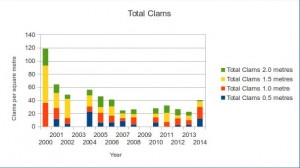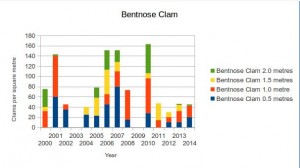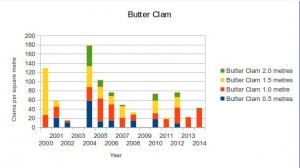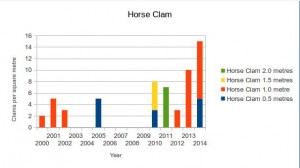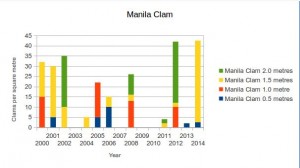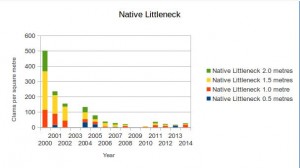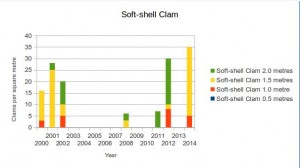Low Tide Day
Community beach and trail cleanup, citizen science activities on Kil-pah-las Beach, local food, and local music. Our next Low Tide Day is June 8, 2019.
History
Low Tide Day began in 1995 with an “Eco Fayre” in Brighton, England, led by the environmental organization River Ocean. Since then International Low Tide Day has celebrated “One tide on one day around the world” on the Saturday in May with the lowest tide. In 1999 Cowichan Bay became the first Canadian community to celebrate International Low Tide Day. The first local Low Tide event was co-sponsored by the Marine Ecology Station, Cowichan Land Trust, Cowichan Estuary Preservation Society, Cowichan Bay Improvement Association, and Cowichan Valley Naturalists, with support from Cowichan Tribes.


Since 2000 the signature feature of Low Tide Day has been the “Critter Count,” a quadrat study on Kil-pah-las Beach designed by Dr. Bill Austin and led by John Scull and many volunteer helpers. Participants do an inventory of 0.2-square-metre quadrats at different tidal levels, identifying and counting clams and listing other species found in the mud. Data from these inventories can be found farther down the page.


The other important feature of Low Tide Day has been a community beach, trail, and road clean-up. Volunteers scour the shore and remove the flotsam, jetsam, and litter left from the winter storms.
Many things have been found on the beach, but by far the largest piece of litter ever collected on Low Tide Day was “Barney the Barge”, removed in 1999.
Since 2008 an added feature of Low Tide Day has been a beach seine led by volunteer scientists from the Pacific Biological Station in Nanaimo. They drag a seine net across the eelgrass beds and up on to the beach. Animals caught in the net are rescued, identified, studied, and then returned to the sea.
Low Tide Day isn’t all science and work, it is a celebration of the intertidal environment. We have food from local sources, music by local musicians, and displays from environmental organizations and other activities.
In 2000 Low Tide was featured in a CBC documentary which can be viewed here and filmmaker Tom Shandel included a segment on Low Tide in his documentary, As Cowichan Goes So Goes the World.

Data
0.2 square-metre quadrats were located at 0.5 metres, 1.0 metres, 1.5 metres, and 2.0 metres above chart datum. In different years 0, 1, 2, or 3 quadrats were placed at each elevation. Teams of children and adults at each quadrat then classified and counted clams to a depth of 30 cm. They also listed other organisms they found. The ID guides used for the clams and other organisms are available here.
The species of clams observed on Low Tide Day have been
| Basket Cockle | Clinocardium nuttali |
| Native Littleneck | Protothaca staminea |
| Manila Clam | Venerupis philippinarum |
| Butter Clam | Saxidomus giganteus |
| Horse Clam | Tresus capax |
| Soft-shell Clam | Mya arenaria |
| Bentnose Clam | Macoma nasuta |
| Dented Clam | Macoma inquinata |
| Baltic Clam | Macoma balthica |
| Varnish Clam | Nuttallia obscurata |
| Cryptic Clam | Cryptomya californica |
Species observed, other than clams:
- Mussel
- Sand Crab
- Limpet
- Barnacle
- Sand Nemertean
- Nereid Worm
- Onuphidae Worms
- Pectinadae Worms
- Segmented Worm
- Proboscis Worm
- Sand Worm
- Bamboo Worm
- Lugworm
- Thread Worm
- Sand Shrimp
- Pink Ghost Shrimp
Below are the graphs of clam abundance. Click any picture to see a larger graph.


